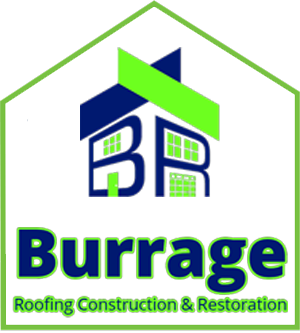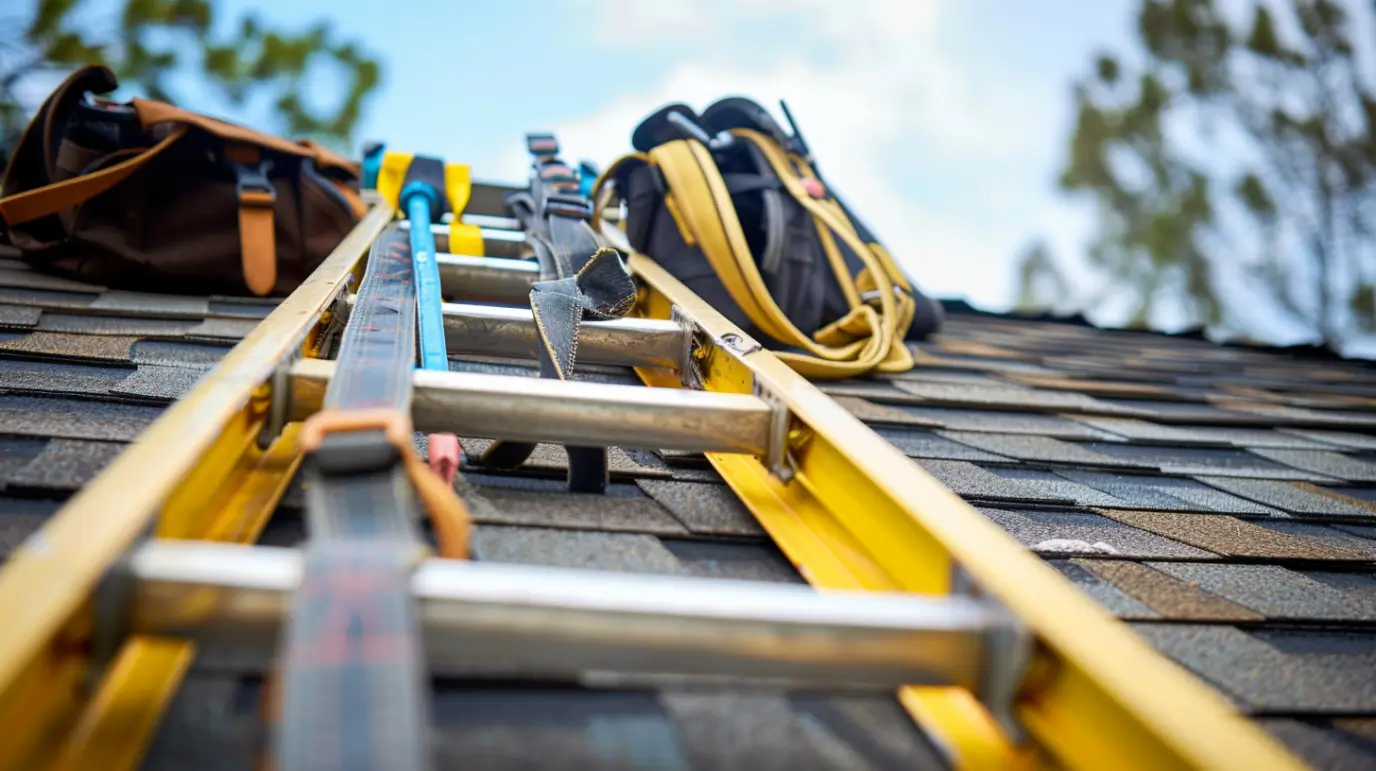When it’s time for reroofing, managing rooftop equipment becomes a critical part of the process. Whether you’re dealing with HVAC units, satellite dishes, or solar panels, improper handling can lead to costly repairs and complications down the line. At Burrage Roofing, our skilled roofing contractors, have decades of experience navigating the challenges of rooftop equipment in Davenport, IA. We make sure every step protects your investment, ensures a watertight new roof, and keeps your building’s essential systems running smoothly.
Challenges of Managing Rooftop Equipment During Reroofing
Managing rooftop equipment presents significant challenges during the reroofing process. The presence of HVAC units, skylights, and plumbing systems can complicate access and increase the risk of damage to both the equipment and the roof system. Disruptions from foot traffic and heavy machinery may compromise insulation and lead to potential leaks. Ensuring the safety of workers while adhering to regulations is crucial to maintaining warranties and achieving long-term durability of both the rooftop and the equipment involved.
Contact Us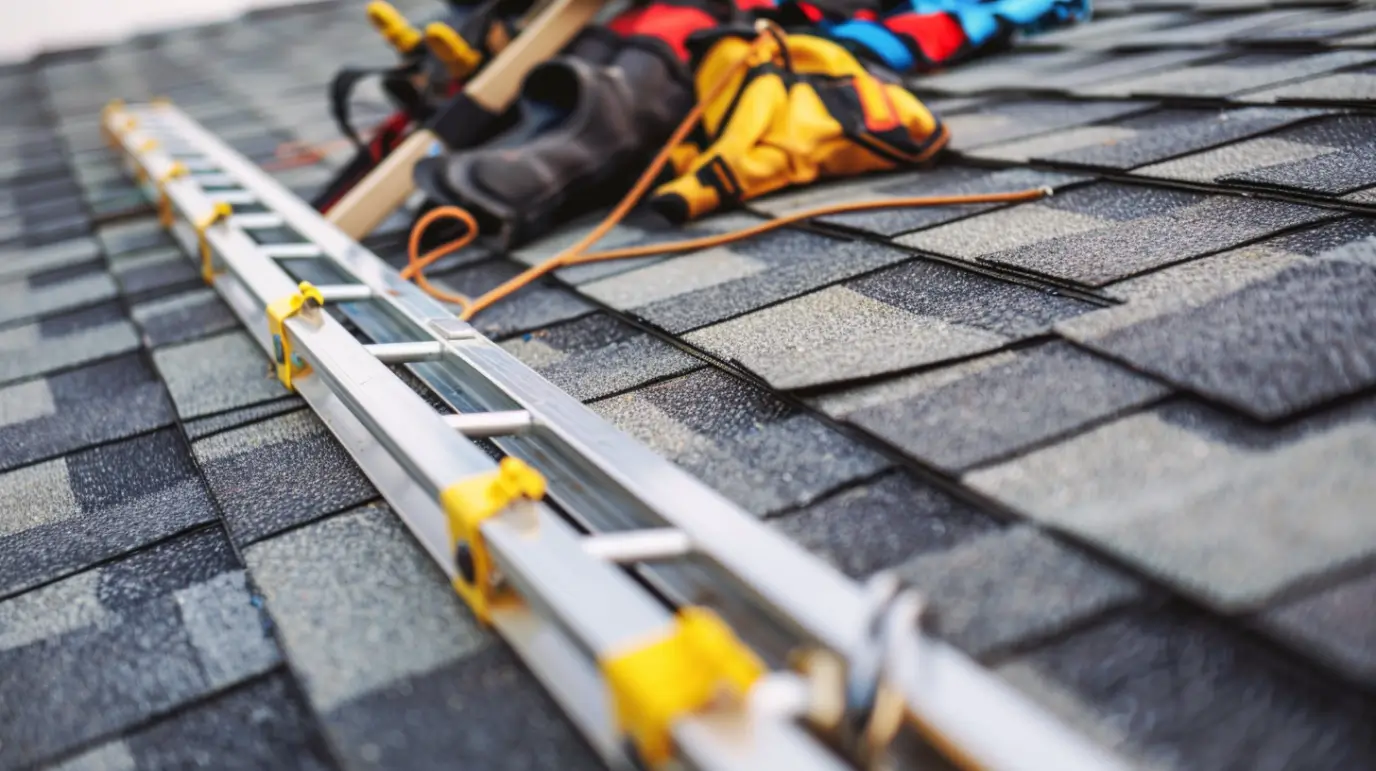
Common Types of Rooftop Equipment on Commercial and Residential Properties
Rooftop equipment varies widely across commercial and residential properties, with HVAC units being one of the most prevalent types. Additionally, plumbing vent stacks, satellite dishes, and solar panels are commonly found on roofs, each serving essential functions. Building owners often install skylights and gutters as well, enhancing both aesthetics and functionality. Understanding the characteristics of each type of equipment is crucial, particularly when considering routine maintenance during reroofing, to ensure long-term efficiency and structural integrity of the roof system.
Risks Posed by Improper Handling During Roof Replacement
Improper handling during roof replacement can lead to serious consequences for both rooftop equipment and the overall integrity of the roof system. HVAC units, plumbing, and satellite dishes may sustain damage from accidental impacts or exposure to harsh weather conditions. Additionally, inadequate protection can result in leaks or condensation issues, compromising insulation and increasing repair costs. Building owners face potential disruptions to routine maintenance schedules, which can further amplify expenses and diminish peace of mind regarding long-term equipment functionality.
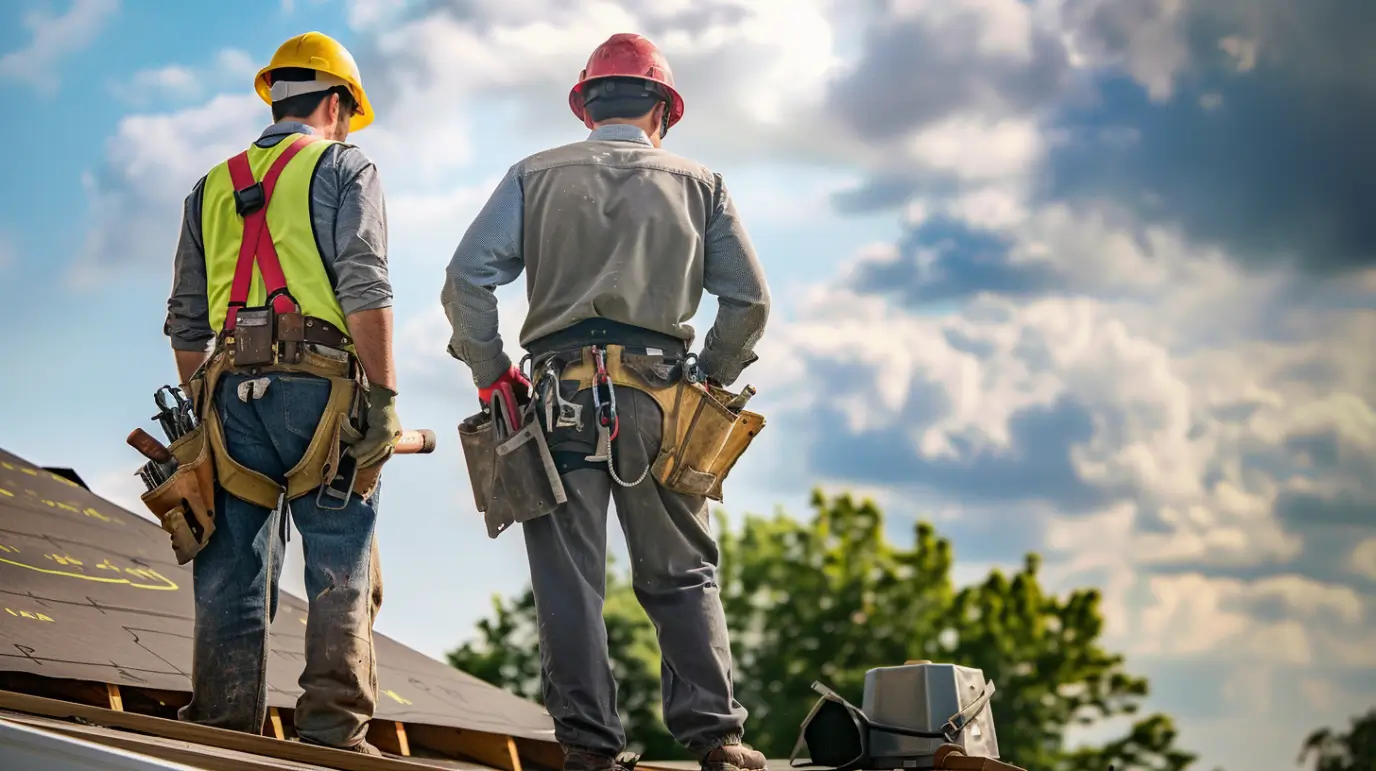
Best Practices for Safely Removing and Reinstalling Rooftop Units
Proper removal and reinstallation of rooftop equipment require a strategic approach. Our team at Burrage Roofing works closely with equipment specialists and building owners to minimize risk and protect both the roof and the units themselves. Routine maintenance of your HVAC units or solar panels is an added benefit of this process, allowing you to address any issues before installing the new roof.
Choosing durable mounting systems and following manufacturer guidelines are essential for upholding your roof warranty, especially for metal roofs or TPO membranes.
Step-by-Step Guide to Safe Removal and Replacement
Begin by securing the work area with proper guardrails to prevent foot traffic near rooftop equipment. Next, ensure all HVAC units, skylights, and plumbing elements are isolated and protected using durable tarps or covers. Carefully remove any roofing material, such as shingles or membrane, from around the rooftop units. Once exposed, disconnect and lift the equipment safely, minimizing impact on insulation and vents. Upon replacement, perform routine maintenance checks to ensure functionality and prolong the roof system’s lifespan.
Essential Tools and Equipment Required
Proper management of rooftop equipment during reroofing necessitates specific tools and equipment to ensure safety and efficiency. Essential items include harnesses and guardrails for fall protection, along with lifts and dollies for maneuvering HVAC units and other heavy equipment. A durable membrane is crucial for sealing seams against potential leaks. Insulation materials should also be on hand to maintain energy efficiency. Lastly, having adequate roofing tools, such as nail guns and safety goggles, can contribute significantly to a successful reroofing project.
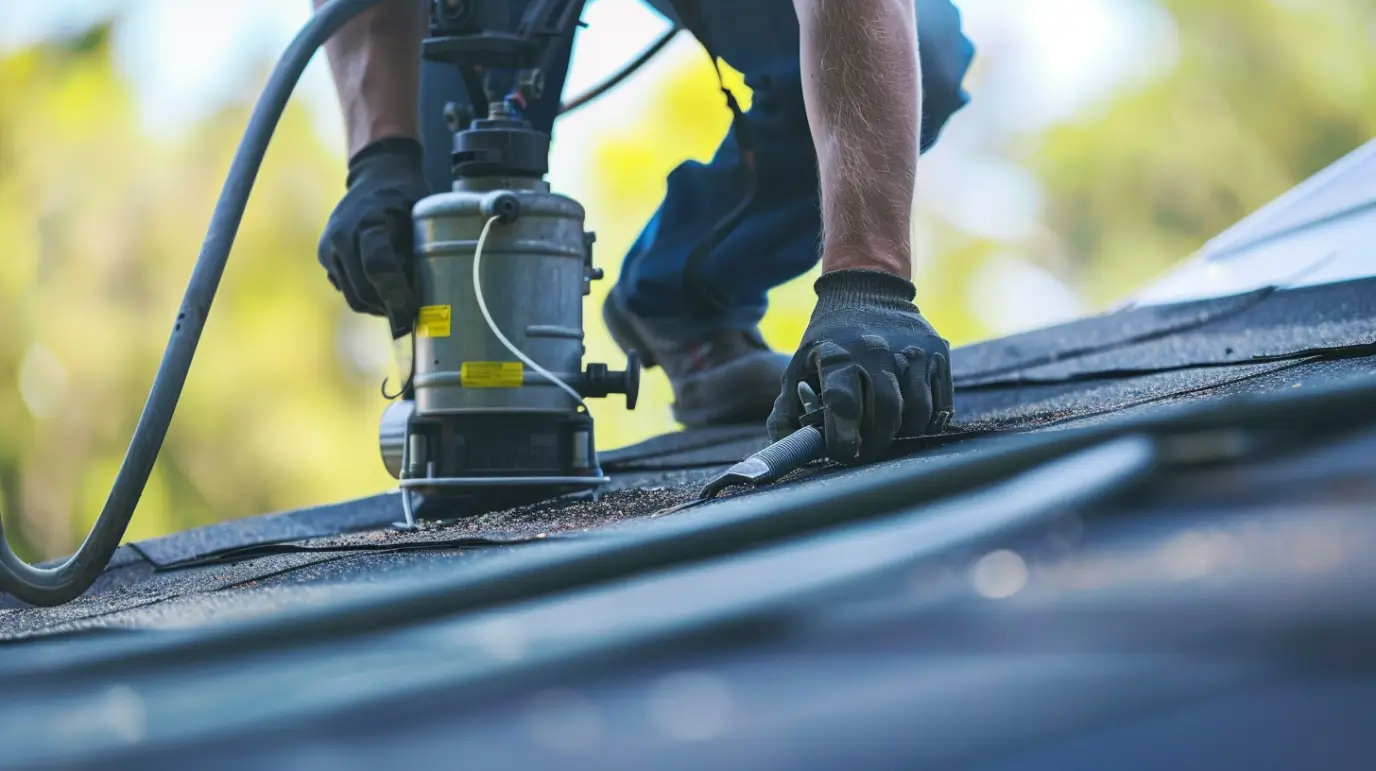
Protecting Equipment and Workers Throughout the Reroofing Process
Safeguarding both your building’s essential equipment and the roofing team is non-negotiable during a reroofing project. At Burrage Roofing, we take every precaution so you gain peace of mind—your roof warranty, worker safety, and minimal disruptions are always at the forefront.
We coordinate with building owners and contractors to maintain a secure work environment, using protective coverings and safety protocols. Prioritizing protection keeps the project on track and guards your long-term investment in the new roof system.
Let’s now cover how to shield sensitive rooftop units, such as HVAC systems and solar panels.
Shielding HVAC Units and Solar Panels From Damage
Careful protection of HVAC units, satellite dishes, and solar panels is essential during the reroofing process. Implementing guardrails and temporary covers can prevent damage from falling debris, condensation, or foot traffic. Building owners should consider using durable tarps or specialized waterproof membranes to shield sensitive equipment from potential leaks or harsh weather conditions. Ensuring proper insulation around these units not only enhances their longevity but also provides peace of mind regarding their functionality post-roof installation.
Safety Protocols and Compliance With OSHA Guidelines
Adhering to safety protocols is crucial during reroofing to mitigate risks associated with rooftop work. Compliance with OSHA guidelines ensures that roofing contractors implement appropriate safety measures, such as utilizing guardrails and fall protection systems, to protect both workers and equipment. Regular training and inspections are also essential to maintain a safe work area, preventing leaks and damage. Additionally, building owners should ensure that all aspects of the roofing project meet regulatory standards, providing peace of mind throughout the process.
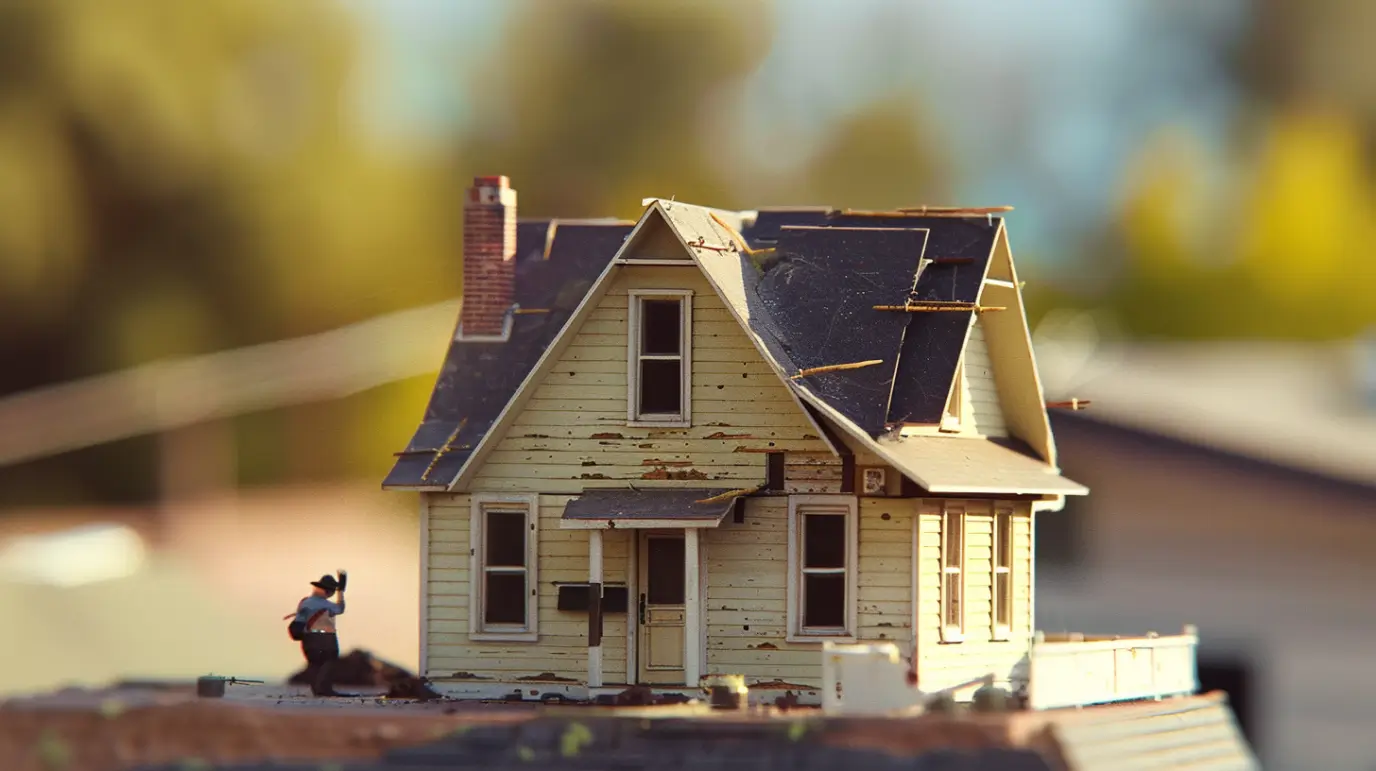
Securing Rooftop Equipment to Meet Windstorm and Safety Regulations
Securing rooftop equipment properly is crucial in Davenport, Iowa, where windstorms can strike suddenly. The type of roof system—whether flat roof, metal roofs, or TPO—determines the best approach to fastening units. Burrage Roofing always follows local safety regulations and manufacturer guidelines to ensure every unit is mounted for long-term performance.
Choosing the right platforms and attachment points isn’t just about compliance; it’s about protecting your investment from the unexpected. Now, let’s explore the most effective mounts and platforms.
Recommended Mounts for Long-Lasting Protection
Selecting durable mounts and platforms is essential for safeguarding rooftop equipment. For HVAC units and satellite dishes, adjustable curb mounts provide a stable foundation, effectively preventing leaks and disrupting routines during severe weather. Utilizing heavy-duty platforms for solar panels ensures protection against foot traffic and potential condensation issues. Metal frames are highly recommended for their resilience, providing long-lasting support while maintaining insulation integrity. These choices contribute to a reliable roofing system, essential for building owners seeking peace of mind and enhanced roof warranties.
Inspection and Permit Requirements in Davenport, Iowa
Understanding local inspection and permit requirements is crucial for successful reroofing in Davenport, Iowa. Building owners must engage with local roofing contractors to ensure compliance with city regulations. Obtaining the right permits not only protects the structural integrity of rooftop equipment but also guarantees adherence to safety standards. Without the necessary inspections, issues such as improper insulation or potential leaks can arise, undermining warranties on the new roof. Thus, thorough preparation contributes to a hassle-free reroofing process and long-term peace of mind.
Get in Touch
Successfully managing rooftop equipment during reroofing not only safeguards the integrity of the roof system but also ensures the safety of workers and the longevity of critical systems. By adhering to best practices, building owners can navigate the challenges associated with disruptions, maintenance, and potential leaks. Investing in regular inspections and warranties provides peace of mind, allowing contractors to execute the roofing project without compromising on safety or equipment functionality. Our commitment to excellence is underscored by our partnerships as an IKO Craftsman Premier Installer and a BBB Accredited Business, ultimately leading to a durable and efficient environment for future use.
Frequently Asked Questions
What challenges have come up in your own roofing projects?
Disruptions are common, especially if building owners have a variety of equipment on their roof. Each type of equipment and the upgrades involved can add complexity, requiring careful coordination among contractors and specialists for smooth project completion.
Is your roof covered by a warranty or guarantee?
A valid roof warranty is essential when investing in a new roof. Most warranties or guarantees, such as the IKO Dynasty’s transferable 20-year warranty, protect your investment for the long term. Always confirm coverage before starting any work.
Read our blog: Do You Need a Permit for Your Roof Work?
